Mathematical models could further CIMMYT’s reach
Mathematical models could boost CIMMYT’s impact on Mexico, a leading scientist in the United States said last month. Carlos Castillo-Chavez, a Mexican-born scientist and professor at Arizona State University, visited El Batán from 21 to 23 August to meet with the staff of the MasAgro program and the Biometrics and Statistics Unit. His trip focused on learning about and giving input on CIMMYT programs as well as seeking opportunities for collaboration with ASU.
Castillo-Chavez is part of U.S. President Barack Obama’s Committee on the National Medal of Science, whose members help select medal candidates from among top U.S. scientists. Castillo-Chavez grew up in Mexico City with interests in theater and literature but thought he would be more successful pursuing math. He moved to the United States in 1974 and worked odd jobs before starting college in Wisconsin and later earning a PhD in mathematics from the University of Wisconsin- Madison. He first visited CIMMYT about two decades ago and was the PhD adviser at Cornell University for Carlos Hernández, the head of CIMMYT’s Biometrics and Statistics Unit. Castillo-Chavez’s research focuses on the intersection between math, natural sciences, and social sciences. He studies disease evolution and social landscapes, including tuberculosis and SARS, the role of mass transit systems in the spread of influenza in Mexico, and “social diseases” such as drinking and drug use. Castillo- Chavez founded the Mathematical, Computational and Modeling Sciences Center at ASU and has received various awards at the national level for his research, teaching, and mentorship of minority students.
Bringing research to the people it could benefit is often a complicated and political process, Castillo- Chavez said. Scientists have the responsibility to communicate their research to the public, but policymakers set the course for “trendy” research topics. It’s an issue that needs to change, he said. And it could change with more interdisciplinary programs that have direct ties to and benefits for society. “Most problems of interest to Mexico don’t always apply to what’s current or hot in international academia,” Castillo- Chavez said. “There is no reason why Mexico should not have its own research agenda that may or may not intersect with the U.S.” He said during the visit that his research on contagion and how information spreads applies to the work CIMMYT is doing. Mathematical models can be used to study and increase the impact CIMMYT’s research has on Mexico by assessing the culture and identifying obstacles, he said. By communicating the research to enough people, “a culture change takes place where farmers and politicians are in constant communication to implement CIMMYT research,” Castillo- Chavez said. ASU and CIMMYT’s Biometrics and Statistics Unit could collaborate on this research by mentoring and training young people who would work closely with both institutions, he said, adding that he’s interested in exploring those possibilities.
During his visit, Castillo-Chavez learned MasAgro is an example of a project that targets a local population, he said. But the challenge with all advancements is finding the right leaders to put them into place. “It’s clear the research could generate dramatic improvements if implemented,” he said. “Nationally, we would see incredible advances in sustainable agriculture.”
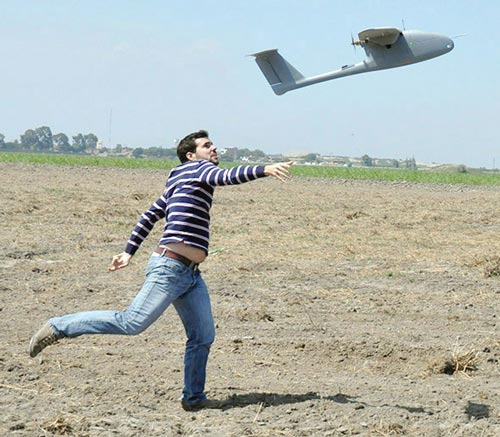 Training on the use of remote sensing from an unmanned aerial vehicle was given at INIAP-Peru’s Vista Florida experiment station on 1-5 June 2013. The course was organized by INIAP, the University of Barcelona, Spain, and CIMMYT’s regional office in Colombia. Remote sensing is used in precision agriculture and for phenotyping crops that are important for the region, such as maize, rice, and sugar cane.
Training on the use of remote sensing from an unmanned aerial vehicle was given at INIAP-Peru’s Vista Florida experiment station on 1-5 June 2013. The course was organized by INIAP, the University of Barcelona, Spain, and CIMMYT’s regional office in Colombia. Remote sensing is used in precision agriculture and for phenotyping crops that are important for the region, such as maize, rice, and sugar cane.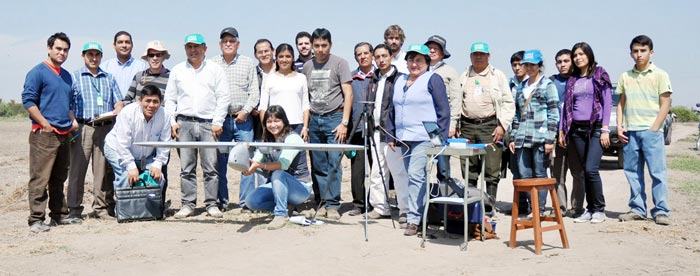
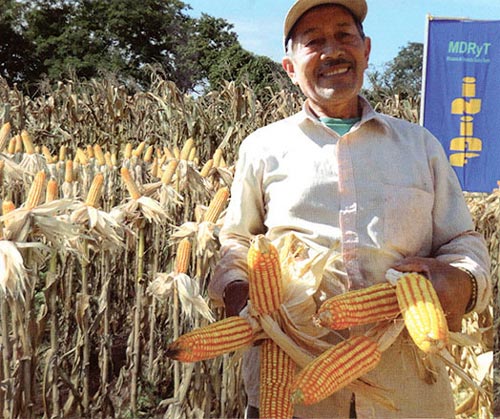 Bolivia’s National Institute for Agricultural, Livestock and Forestry Innovation (
Bolivia’s National Institute for Agricultural, Livestock and Forestry Innovation (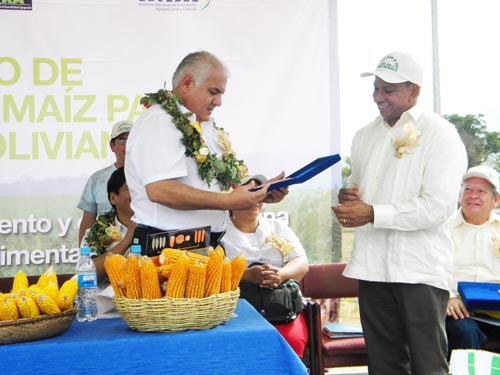
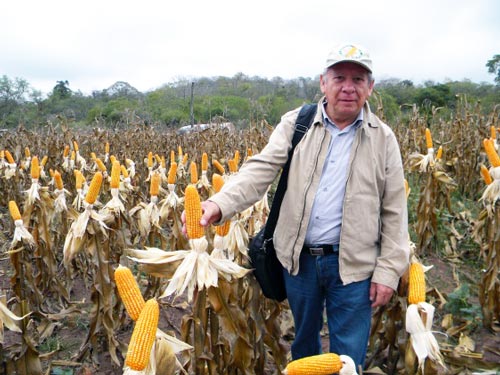
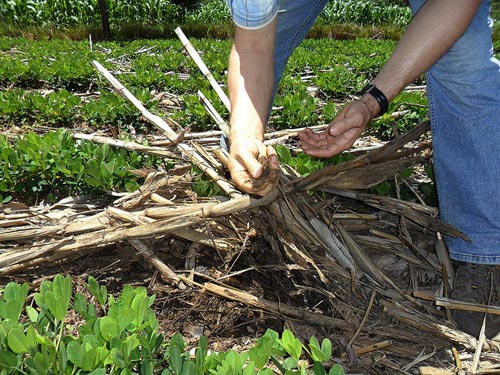 After months of discussions and debates on the scientific evidence regarding conservation agriculture for small-scale, resource-poor farmers in Sub-Saharan Africa and South Asia, a group of 40 scientists reached a consensus on the goals of conservation agriculture and the research necessary to reach these goals. The discussions leading to the signing of the
After months of discussions and debates on the scientific evidence regarding conservation agriculture for small-scale, resource-poor farmers in Sub-Saharan Africa and South Asia, a group of 40 scientists reached a consensus on the goals of conservation agriculture and the research necessary to reach these goals. The discussions leading to the signing of the 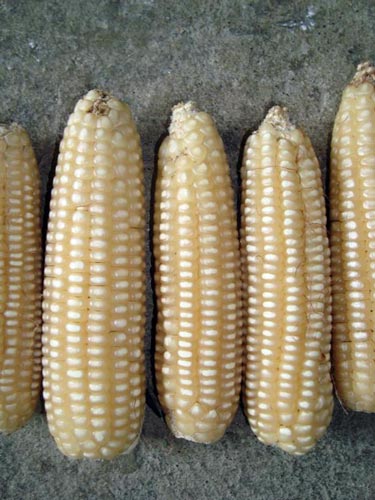 On 26-27 April 2013, the
On 26-27 April 2013, the 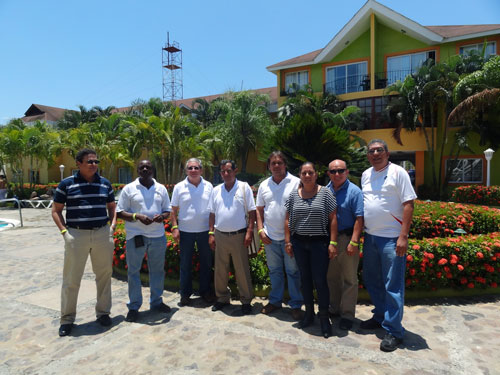 The project has generally been considered very successful. “We now know which mycotoxins are important in the region and we have the products to potentially minimize the risk,” commented Mahuku. “What we need is to widely test and disseminate the products so that they reach as many farmers as possible. With a little infusion of resources, the dedication demonstrated by this group, and support from policy makers, I have no doubt that we will get there.”
The project has generally been considered very successful. “We now know which mycotoxins are important in the region and we have the products to potentially minimize the risk,” commented Mahuku. “What we need is to widely test and disseminate the products so that they reach as many farmers as possible. With a little infusion of resources, the dedication demonstrated by this group, and support from policy makers, I have no doubt that we will get there.”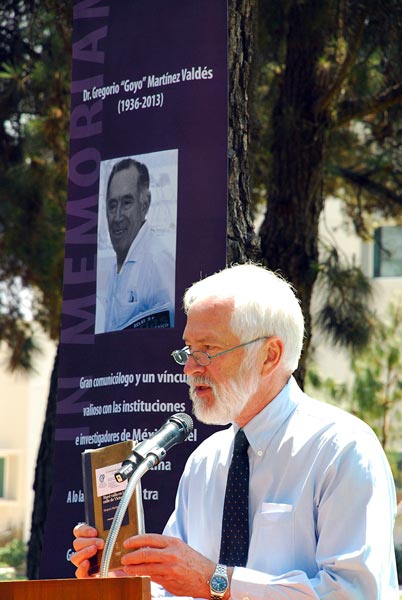 Nearly 140 members of the CIMMYT community and valued Mexican partners gathered on 16 April 2013 with the family of Gregorio “Goyo” Martínez Valdés, retired CIMMYT institutional relations officer who succumbed to cancer at 77 on 07 April, in a solemn ceremony in the pine grove at El Batán to commemorate his life and work.
Nearly 140 members of the CIMMYT community and valued Mexican partners gathered on 16 April 2013 with the family of Gregorio “Goyo” Martínez Valdés, retired CIMMYT institutional relations officer who succumbed to cancer at 77 on 07 April, in a solemn ceremony in the pine grove at El Batán to commemorate his life and work.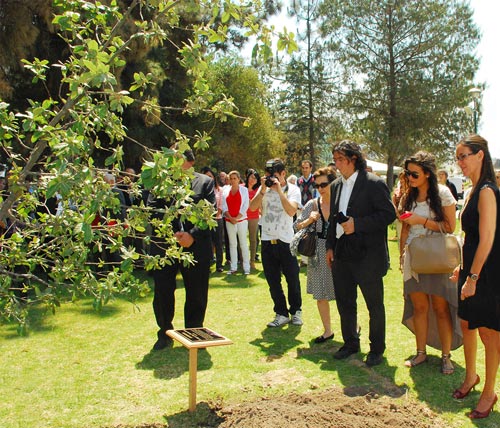 “He had a big heart, divided into clear portions, and CIMMYT occupied a big chunk,” said Martínez’s son Francisco, who noted his father’s supreme love for work and colleagues. He also brought a portion of his father’s ashes and bequeathed them to CIMMYT.
“He had a big heart, divided into clear portions, and CIMMYT occupied a big chunk,” said Martínez’s son Francisco, who noted his father’s supreme love for work and colleagues. He also brought a portion of his father’s ashes and bequeathed them to CIMMYT.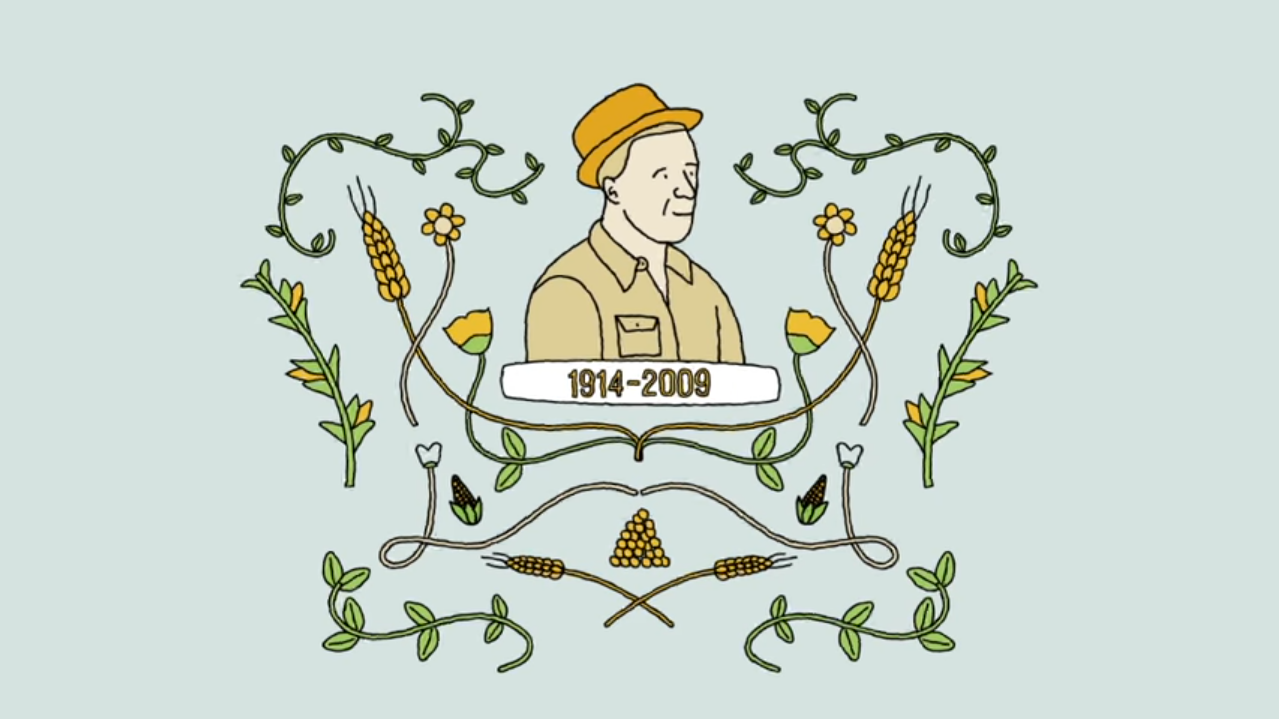
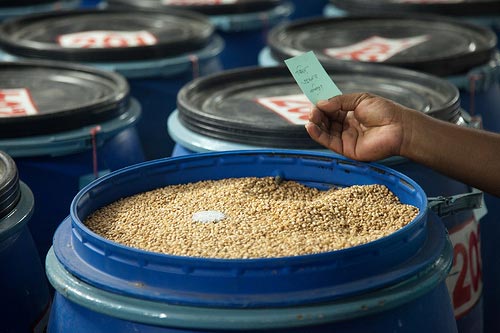 The 2nd Latin American Convention on Airtight Storage sponsored by the global company GrainPro, Inc was held during 1-2 March 2013 in Antigua, Guatemala. More than 50 participants from Brazil, Ecuador, Colombia, Costa Rica, Honduras, El Salvador, Guatemala, Mexico, and the USA, and other countries attended the event.
The 2nd Latin American Convention on Airtight Storage sponsored by the global company GrainPro, Inc was held during 1-2 March 2013 in Antigua, Guatemala. More than 50 participants from Brazil, Ecuador, Colombia, Costa Rica, Honduras, El Salvador, Guatemala, Mexico, and the USA, and other countries attended the event.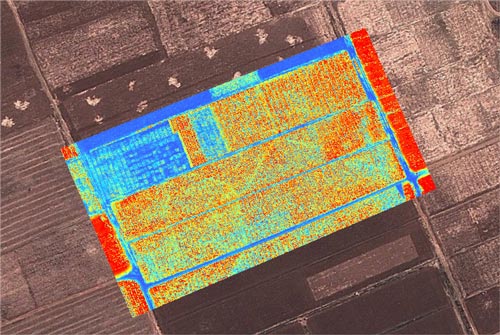 To free phenotyping of the varietal development bottleneck label, many new tools have been developed to enable an easier plant growth and development characterization and field variability. Until recently, these tools’ potential has been limited by the scale on which they can be used, but this is changing: a new affordable field-based phenotyping platform combining cutting edge aeronautics technology and image analysis was developed through collaboration between researchers from the
To free phenotyping of the varietal development bottleneck label, many new tools have been developed to enable an easier plant growth and development characterization and field variability. Until recently, these tools’ potential has been limited by the scale on which they can be used, but this is changing: a new affordable field-based phenotyping platform combining cutting edge aeronautics technology and image analysis was developed through collaboration between researchers from the 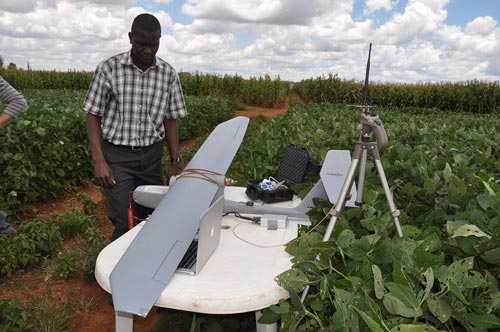 The new platform uses ‘Sky Walker,’ an unmanned aerial vehicle which can fly at over 600-meter with an average speed of 45 km/h. The vehicle has thermal and spectral cameras mounted under each wing, and its flight path and image capturing are controlled via a laptop using Google Earth images. Jill Cairns and Mainassara Zaman-Allah tested the platform at CIMMYT-Harare along with José Luis Araus (University of Barcelona), Antón Fernández (AirElectronics president), and Alberto Hornero (Sustainable Agricultural Institute of the High Research Council) to establish the optimal flight path (distance between plane passes and height) for plot level measurements. Field experiments were phenotyped for spectral reflectance and canopy temperature within minutes; these will be compared to results from the GreenSeeker.
The new platform uses ‘Sky Walker,’ an unmanned aerial vehicle which can fly at over 600-meter with an average speed of 45 km/h. The vehicle has thermal and spectral cameras mounted under each wing, and its flight path and image capturing are controlled via a laptop using Google Earth images. Jill Cairns and Mainassara Zaman-Allah tested the platform at CIMMYT-Harare along with José Luis Araus (University of Barcelona), Antón Fernández (AirElectronics president), and Alberto Hornero (Sustainable Agricultural Institute of the High Research Council) to establish the optimal flight path (distance between plane passes and height) for plot level measurements. Field experiments were phenotyped for spectral reflectance and canopy temperature within minutes; these will be compared to results from the GreenSeeker.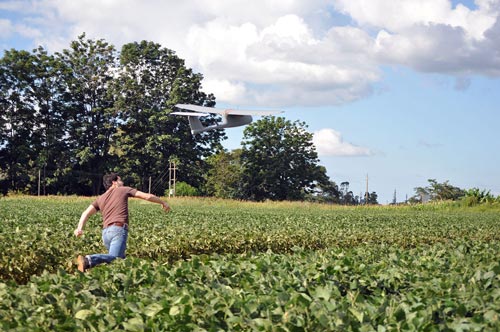
 A recently-emerged disease in Eastern Africa, maize lethal necrosis (
A recently-emerged disease in Eastern Africa, maize lethal necrosis (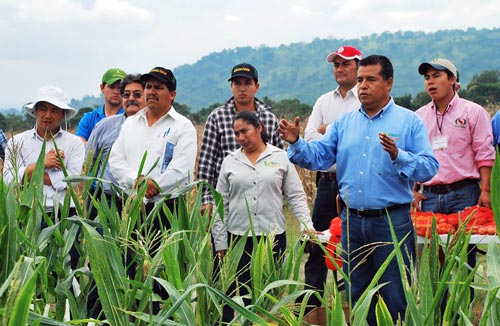 The use of doubled haploids in maize breeding was first proposed more than half a century ago and dramatically reduces the time required to produce homozygous inbred lines. Though widespread in modern maize breeding programs, the technique is little used by public programs and small- and medium-scale seed companies, especially in developing countries, partly due to its complexity.
The use of doubled haploids in maize breeding was first proposed more than half a century ago and dramatically reduces the time required to produce homozygous inbred lines. Though widespread in modern maize breeding programs, the technique is little used by public programs and small- and medium-scale seed companies, especially in developing countries, partly due to its complexity.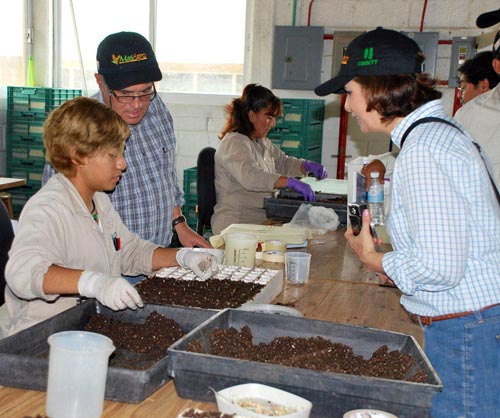 “This is a cutting-edge technology,” says Tito Clauré, Maize Program Coordinator at Bolivia’s Instituto Nacional Autónomo de Investigaciones Agropecuaria (INIAP). “We’re very happy with what we learned about double haploids, but we also attended excellent presentations on statistics, physiology, and database creation.” Clauré mentions that INIAP’s Maize Program is part of the Sustainable Modernization of Traditional Agriculture (MasAgro) project, and has received much useful germplasm from CIMMYT.
“This is a cutting-edge technology,” says Tito Clauré, Maize Program Coordinator at Bolivia’s Instituto Nacional Autónomo de Investigaciones Agropecuaria (INIAP). “We’re very happy with what we learned about double haploids, but we also attended excellent presentations on statistics, physiology, and database creation.” Clauré mentions that INIAP’s Maize Program is part of the Sustainable Modernization of Traditional Agriculture (MasAgro) project, and has received much useful germplasm from CIMMYT.
